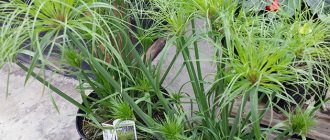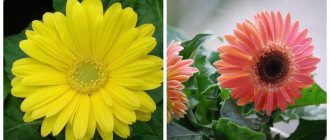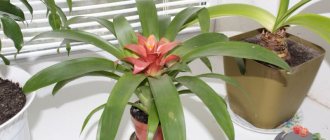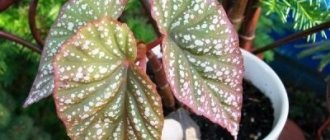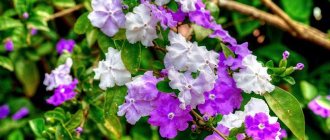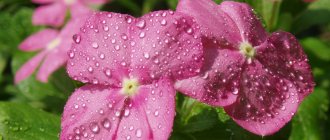The most unpretentious indoor flowers
A green corner does not necessarily mean a lot of new troubles and a waste of time. There are many completely unpretentious flowers that require your minimal participation.
Ficus
At the head of unpretentious and universal plants for the home is unconditionally the ficus with all the variety of its varieties. There are compact species up to 20 cm, and there are full-fledged trees that stretch several meters.
Aspidistra
Aspidistra became a regular guest in offices precisely because of her unpretentiousness. For decorative leaves, weekly watering is enough so that the temperature around does not fluctuate more than 3-5 degrees.
Aloe
Healing aloe is widely used in pharmaceuticals, cosmetology and hundreds of folk recipes. It is infinitely unpretentious on the windowsill, because the fleshy leaves independently store moisture and nutrients.
Aglaonema
Aglaonema is afraid of direct sunlight, so it is ideal for remote and shady corners. Decorative variegated species differ in color, up to rare red-pink.
Fuchsia
Beautiful decorative fuchsia can be easily grown at home on a windowsill, especially since in winter it just likes cool weather. In summer, the flower can be taken to the country and transplanted into a container.
Asparagus
Beautiful and unusual asparagus with needle-like leaves requires periodic watering and annual replanting. Otherwise, it does not need any special conditions and any lighting is suitable.
Balsam
Although impatiens are called impatiens, the small bush is completely unpretentious to care for. Partial shade and plenty of watering are enough for him, but he is completely indifferent to dry air.
Reproduction
Cyperus reproduces in two ways:
- Dividing the bush. When replanting the plant, carefully divide the bush with a sharp knife so that each part contains three to four shoots. Try not to damage the earthen ball when dividing, so the plant can quickly take root in new conditions.
- Vegetative method. For this method of propagation, it is necessary to cut off the umbrella, leaving a stem no more than 1 centimeter long, shorten the leaves of the umbrella to 3 centimeters and lower it into water at room temperature with the stem up. The water in the glass should not exceed 2 centimeters, that is, it is not advisable to immerse the entire umbrella in water. Within 10-14 days the cutting will give roots, which will be a signal to transplant it into a separate pot. For rooting, cuttings can also be planted in sand, periodically moistening it. Around this period of time (2 weeks), the cyperus will give roots and will be ready to be transplanted into an earthen substrate.
The lush, green cyperus plant can be an excellent decorative decoration for an apartment, office space or formal hall. Spend just a few minutes a day on cyperus and enjoy a wonderful green oasis.
Climbing indoor flowers
Luxurious ivy and vines beautifully entwine walls, shelves or racks. You can grow quite a few different varieties and species in your room!
Monstera
Monstera is prized for its fancy and large carved leaves. It grows quickly and wraps around any support, attaching to it with thin aerial roots.
Cissus
Decorative cissus belongs to the grape variety and came to us from the islands. Special tendrils are firmly attached to the support, and the flower grows throughout the year - without pronounced dormant periods.
Tricolor morning glory
If morning glory grows in the garden for only a year, then in the room it is a lush flowering perennial with bright petals. It has rather large and heavy leaves, so it needs to be carefully tied to a support.
Wax ivy Hoya
The plant got its name from its unusual flower umbrellas, as if covered with wax. In order for ivy to grow more beautifully, it needs to be periodically replanted and tied up.
Stephanotis
The large vine reaches five meters in length and blooms with elegant fragrant flowers, for which it is also nicknamed Madagascar jasmine. The color of different varieties varies from soft cream to pale lilac.
Syngonium
Syngonium grows up to one and a half meters and clings tightly to the support. Among the variety of varieties, there are species with whitish, green or variegated leaves, which with age become lancet-lobed.
Description
Sedge is a genus of herbaceous annual plants and perennials of the Sedge family. Its unpretentious and hardy representatives (more than 2000 varieties) grow throughout the globe, in temperate climates.
IN THE PHOTO: Sedge is able to take root even in conditions that are difficult for other plants.
Due to the fact that Sedge prefers moist soil, it is most often found on the banks of reservoirs and in wetlands. This fundamentally distinguishes it from other grass-like plants that grow mainly on dry soil.
There are two morphological groups of sedges:
- Sprawling . These include black sedge, sharp sedge, water sedge, nosed sedge, pointed sedge, shore sedge and bladder sedge. The rhizomes of species of this group are long, with rosettes extending from them, taking root within the growing area. As they grow, such plants create green clumps, loose or dense.
- Hummock-forming. These are drooping sedges, millet sedges, sedge-like, tall, fox-like, turfy. Their rhizomes are short and dense. They form clear and dense hummocks.
The height of sedge stems can vary depending on the type and variety. For example, the stems of some forms of high Sedge can reach 100 cm in height, in Capricorn Sedge they do not exceed 70 cm, and in the low-growing Bohemian Sedge - 30 cm.
The length of Sedge leaves reaches 30 cm. Their color varies from green (with a wide range of shades) to bluish-blue, with a border of different tones. The width of Sedge leaf blades is from 2 to 15 mm. The shape and arrangement of leaves on the stem are varied: in some species they are erect, in others they are curved into an arc.
The spikelets of inflorescences can be low-colored and low, like those of the turfy sedge, or, conversely, high, lush and large (this is how black and vesicular sedges differ).
IN THE PHOTO: Spikelets of palm sedge (Carex muskingumensis).
The color of Sedge inflorescences ranges from light tones of green to black-olive, brown and black. Narrow-cylindrical, cone-shaped or drooping spikelets give sedge clumps a special decorative effect. The fruits of plants of the genus - diaspores - are slightly biconvex or triangular in shape.
Popular varieties
Morrow sedge is usually grown on window sills, balconies and terraces, especially the varieties 'Ice Dance', 'Variegata', 'Fisher's Form', 'Goldband'. and brownish sedge, which is also graceful. Very interesting forms of the latter type are 'Jenneke', 'Jubilo', 'Lady Sunshine', 'Sophia'.
IN THE PHOTO: Sedge Morrow 'Ice Dance' variety, popular in Russia.
Winged sedge looks spectacular in the garden: the 'Knighshaye's Form' variety with bright yellow leaves, the golden-green bushes of 'Bowle's Golden', the sophisticated 'Aurea' with a yellow border. For single plantings, the “morning star” with large inflorescences measuring 2.5 cm is well suited. - Gray's sedge 'Morning Star'. The creamy white border on the leaves of the rusty-spotted sedge 'Island Brocade' gives this variety an elegant appearance.
IN THE PHOTO: Gray sedge with unusual inflorescences 'Morning Star'.
Drought-resistant indoor flowers
If you often leave, your home is always too hot, and your windows face south, you need indoor flowers that are not afraid of short-term droughts. And there are such people - we checked them all!
Zamioculcas
In common parlance, this is the same money tree that is so often found in apartments and offices. It grows quickly and looks good thanks to its elastic, shiny leaves.
Kalanchoe Blossfeld
The flower pleases not only with dark waxy leaves, but also with beautiful dense blooms, even with almost no moisture. Following the old buds, new ones immediately appear.
Sansevieria
This unusual decorative flower is reminiscent of succulents and cacti, because it also does not require complex care. Sansevieria is also called “pike tail” for its tall and elongated, erect leaves.
centipede fern
Most ferns need high humidity, but centipedes are an exception. It reproduces by elongated shoots covered with brown hairs that resemble a centipede.
Scindapsus
The amazing creeping flower is an unusual tropical visitor that tolerates dry atmospheres. He is also not afraid of overwatering, so rare but very abundant watering is enough.
Pelargonium
Of the densely flowering plants, one of the most unpretentious to dryness is pelargonium. It blooms in large inflorescences-umbrellas, which rise in lush caps above the velvety leaf plates.
indoor ivy
Unlike most climbing plants, indoor ivy does not require spraying or excess moisture. A healthy temperature regime is enough for it - and it can grow even in the far corner of the room.
Decorative sedge - botanical information
Ornamental sedge for the garden is a perennial herbaceous plant from the sedge family, growing in all corners of the world. According to various sources, there are from 1500 to 2000 species of sedge.
Main features of the plant:
- The root system is fibrous, can be elongated or shortened, but always with adventitious roots.
- The leaf blades are narrow and sharp, arranged in three rows.
- During the flowering period, the plant is covered with flowers, which are divided into dioecious and monoecious, collected in spikelets. They have a drooping shape and hang from the stems.
When planting and caring for decorative sedge, you need to take into account that all plant varieties differ in appearance and growing requirements. They may appear as lush grass, small shrubs, or a thick “carpet” covering the ground.
Indoor flowers that bloom all year round
If you want your home flower garden to delight you throughout the year, you can organize it! Decorative ever-flowering varieties are exactly what you need!
Abutilone
The beautiful abutilon is called indoor maple for its characteristic leaf shape. If you continue feeding and take care of lighting at the end of the season, it will bloom in winter.
Begonia
Begonia blooms all year long if the temperature around is above +16 degrees and it has enough light. Every two weeks, feed the flower and place a container of water around it to humidify the air.
Hibiscus
The beautiful evergreen hibiscus is nicknamed the Chinese rose for its beauty and elegance. It is quite demanding to care for and can drop all its buds if there is a lack of moisture.
Anthurium
Anthurium has not only beautiful flowers, but also large glossy leaves that resemble hearts. The plant requires moisture, spraying, fertilizing and heat - from +15 degrees.
Geranium
Unpretentious geraniums feel great on windowsills under any conditions. They don’t even need a very high temperature - +8 degrees is enough, but regular inflows of fresh air are required.
Koleriya
Kohleria attracts attention with its unusual bell-shaped flowers. It is undemanding in terms of lighting and watering, but requires high air humidity.
Balsam
In winter, balsam continues to bloom even under ordinary artificial lighting, for which flower growers value it. But he does not tolerate cramped spaces, so it is better to move the flowerpots away from neighbors.
Sedge in landscape design
In landscape design, decorative sedge is used for landscaping garden plots, decorating ponds and creating cozy corners of natural nature. Most often, this plant is used for the original design of ponds and other bodies of water.
Sedge loves high humidity, so it quickly takes root on coastal soil. Lush and slightly drooping bushes of the plant harmoniously emphasize the natural attractiveness of the pond.
Ways to use decorative sedge in landscape design:
- Decorating alpine hills - the most impressive sedge looks are low-growing groundcover varieties in combination with taller ones that cover the ground between the stones.
- Design of a rockery - sedge can be placed on the sides of the composition without covering the smaller central crops.
- Landscaping shady areas of the garden - low-growing varieties of decorative sedge planted under trees create lush and thick “carpets”.
Decorative sedge is a spectacular and unpretentious plant used for landscaping garden plots and decorating ponds. Thanks to the minimal requirements for care, even a novice gardener will be able to grow a lush and beautiful plant, creating a corner of natural nature in the garden.
Indoor flowers for the bathroom
A green corner in the bathroom is a real dream, because it promotes pleasant relaxation after a hard day. Not all plants will withstand such conditions, but we found several options!
Dracaena Sandera
Due to the special shape of its shoots, Dracaena Sandera is called indoor bamboo. It looks wonderful solo in pots and in glass vases with water. Keep in mind that she needs more space, because she grows quickly.
Orchid
There is a stereotype that orchids are extremely capricious, but several of their varieties will fit perfectly into the bathroom. These are phalaenopsis and paphiopedilum, which require high humidity and soft diffused light.
Philodendron
This is a hanging indoor plant, which requires much more moisture than light. It needs constantly moist soil and more space - very soon you will get a whole green wall.
Calathea
Large decorative calathea leaves feel ideal even at 90% humidity. They need warmth without sudden temperature changes and fairly short glimpses of the sun.
Indoor flowers for children
If there are small children at home, safety comes to the fore, because kids experience the world tactilely, by smell and taste. We have chosen several plants that will be completely harmless to your precious child!
Lemon Tree
Lemon is light, fresh and clean, and its leaves contain beneficial essential oils. It has a pronounced antibacterial effect, and also a subtle pleasant aroma.
Violet
Unpretentious violets create a feeling of warmth and comfort in the room, which is so valuable for children. Flowers and leaves are completely safe, because sometimes the petals are even used to decorate dishes in cooking.
Tradescantia
The flower is not only unpretentious, but also completely harmless, even if a child tastes it. Bright two-color leaves decorate the interior and delight with interesting colors.
Cypress
Children are attracted to the whimsical cypress tree by its unusual shape and texture. It has natural antiseptic properties, so it destroys bacteria and fungi around it.
Peperomia
Peperomia leaves contain healing phytoncides that improve the health of the air. This is a good choice if your child is often sick and you need to strengthen his immunity.
Decembrist
For many years, an ornamental plant with unusual segmented shoots and leaves has been found in apartments. Children are attracted by the bizarre shape and bright, colorful blooms.
Spathiphyllum
Of the unusual and flowering plants, spathiphyllum is best suited for a child's room. It also purifies the air, maintains healthy humidity in the room and does not require complex care.
Source
Interesting information about Pandan
Pandanus, also known as pandan, adorns the Pandanaceae family with its beauty. A genus of seven hundred and fifty perennial tree-like specimens that like the sultry climate of the Eastern part of the globe.
The homeland can be considered Hawaii, the western part of the African continent, India, Polynesia, Vietnam and up to the Australian continent.
Most of all, pandanus likes the island of Madagascar, which is home to approximately ninety varieties of this plant.
These wonderful screw palms can grow beautifully along river banks, mountain forests, and in the highlands; they even decorate the surface of a volcano, sea coasts and coral reefs.
In most cases, the Pandanus flower is able to form numerous light roots that stretch to the ground and gradually take root. Throughout its life, the standing position of the screw palm is maintained only thanks to lignified aerial roots, called stilts.
The pandan plant has four-meter long sword-shaped, linear, sharp-serrated leaves at the edges, the width of which reaches fifteen centimeters. The leaves are located on the trunk and form double-row helical spirals. Due to this, the pandan flower has other names - “screw palm” or “screw tree”. Over the years, the leaf blades fall off from below, leaving behind nicks. As a rule, pandanus blooms are observed in a natural microclimate. Its tiny yellow flowers without perianths are concentrated into panicle inflorescences or cobs.
Photos of Pandanus can be seen in the next section.
Pandanus species
Pandanus sanderi
Veitch's pandanus, also known as Vicha (Pandanus veitchii)
Veichi's homeland is Southeast Asia. On the shortened trunk of the Vichi pandan there is green foliage with white stripes in a spiral pattern, which can reach 1 m in length and 8 cm in width. At the edges of the leaves there are very hard thorns with white tips. This variegated pandanus variegata can reach a height of one and a half meters in indoor conditions. But at times one has to wait a very long time for Veitch’s pandanus to bloom, sometimes in vain.
Pandanus utilis
This large palm tree can reach twenty meters in size, and a cultivated one - 3 m, but this is only in the natural environment. Hard leaves, reaching one and a half meters in length and ten centimeters in width, are located on the trunk in a helical shape. The edge of the foliage is covered with reddish thorns. At the end of flowering, the useful pandan branches beautifully and turns into a handsome man. At home, a non-blooming pandan of this variety pleases its owners only with its gorgeous foliage.
Pandanus care at home
It is not at all difficult to care for the plant. This unpretentious indoor palm tree does not make any special demands on its existence. For successful maintenance, it is advisable to consider some of the subtleties of its care.
Selecting a location and temperature
The Pandan plant thrives throughout the year in bright light. It is better to place indoor pandanus near windows from the west or east. It is advisable to rotate the pot with the plant periodically to prevent it from being one-sided.
Important! Lack of lighting will negatively affect the brightness of foliage color.
Temperature ranges from 19˚С to 25˚С will be acceptable for indoor palm trees all year round.
Remember! During the cold period, the temperature in the room should not be lower than 13˚C. This temperature limit leads to the death of pandan.
Pandanus has a love of fresh air. So periodic airing will be pleasant for the flower.
Main! Protect your indoor plant from drafts.
Humidity and watering
The pandanus palm can be content with moderate environmental humidity levels. You can wipe the leaves from bottom to top with a damp cloth. Be sure to use gloves. There is no need to get rid of the aerial roots that have appeared; add some moss to the flowerpot and keep it moist. For greater comfort, you can use flower pots with automatic watering.
Summer watering should be plentiful at intervals of 3 days. It is necessary that the upper part of the earthen mixture dry out slightly between waterings. We use slightly lukewarm and settled water. In the cold off-season, we reduce watering and be sure to monitor the condition of the substrate.
Soil mixture and its fertilizer
Turf and leaf soil, sand and humus are a suitable and comfortable soil mixture (equal parts).
This flower needs systematic feeding in the off-season. It is better to use a complex mineral fertilizer, which is suitable for all decorative foliage plants.
How to propagate pandanus?
Using seeds, separated bushes and cuttings.
Seeds are sown in a sand-peat mixture and stored in a mini-greenhouse at a temperature of +25 °C. It is advisable to look occasionally and moisten the earthen mixture. In a month the shoots will appear. It is better to plant seedlings with three leaves in a stable place.
The cut lateral twenty-centimeter cuttings are slightly dried, having previously treated the cuts with charcoal. They are rooted in a soil mixture of equal parts sand and peat. We organize greenhouse conditions with temperatures of 25-28˚C. We systematically ventilate and water with a spray bottle; within one and a half to two months the sprouts acquire roots.
Daughter rosettes formed on the trunk or leaf axils are also suitable for propagation of the screw palm. We separate the rosettes with small roots and plant them in flat flowerpots. Good drainage of at least twenty millimeters is required, then turf soil of at least seventy millimeters and sand, a layer of at least forty millimeters. We plant the roots in the sand, press them, cover them with translucent hermetic material and create a comfortable temperature of more than 22 degrees. After 2 months, the matured cubs are transplanted into larger pots.
Transfer
The screw tree has rather fragile roots. Therefore, replanting must be done very carefully, transferring from a small pot to a larger one. Every year you can renew the flowerpot for young specimens, and for older palm trees you can increase the period to three years by filling the flowerpot with roots.
Pandanus pests and diseases
Occasionally, the plant is attacked by uninvited guests: scale insects, spider mites, and scale insects. If pests are identified, treat the plant with an insecticide. However, in general, the indoor pandanus palm is not very attractive to pests.
Diseases and pests
Frequent diseases of plants of the genus Sedge are gray rot and powdery mildew. The drugs Kopfugo Super, Ferazim and Derozal Euro cope with the prevention and treatment of gray rot. The spread of powdery mildew will be prevented and stopped by effective fungicides Topaz, Bayleton and Sulfarid.
Aphids, spider mites, scale insects, and mealybugs can seriously damage Sedge. Effective modern drugs to combat these mites and insects are the insectoacaricides Actellik, Actofit, Vermitek, Karbofos.
